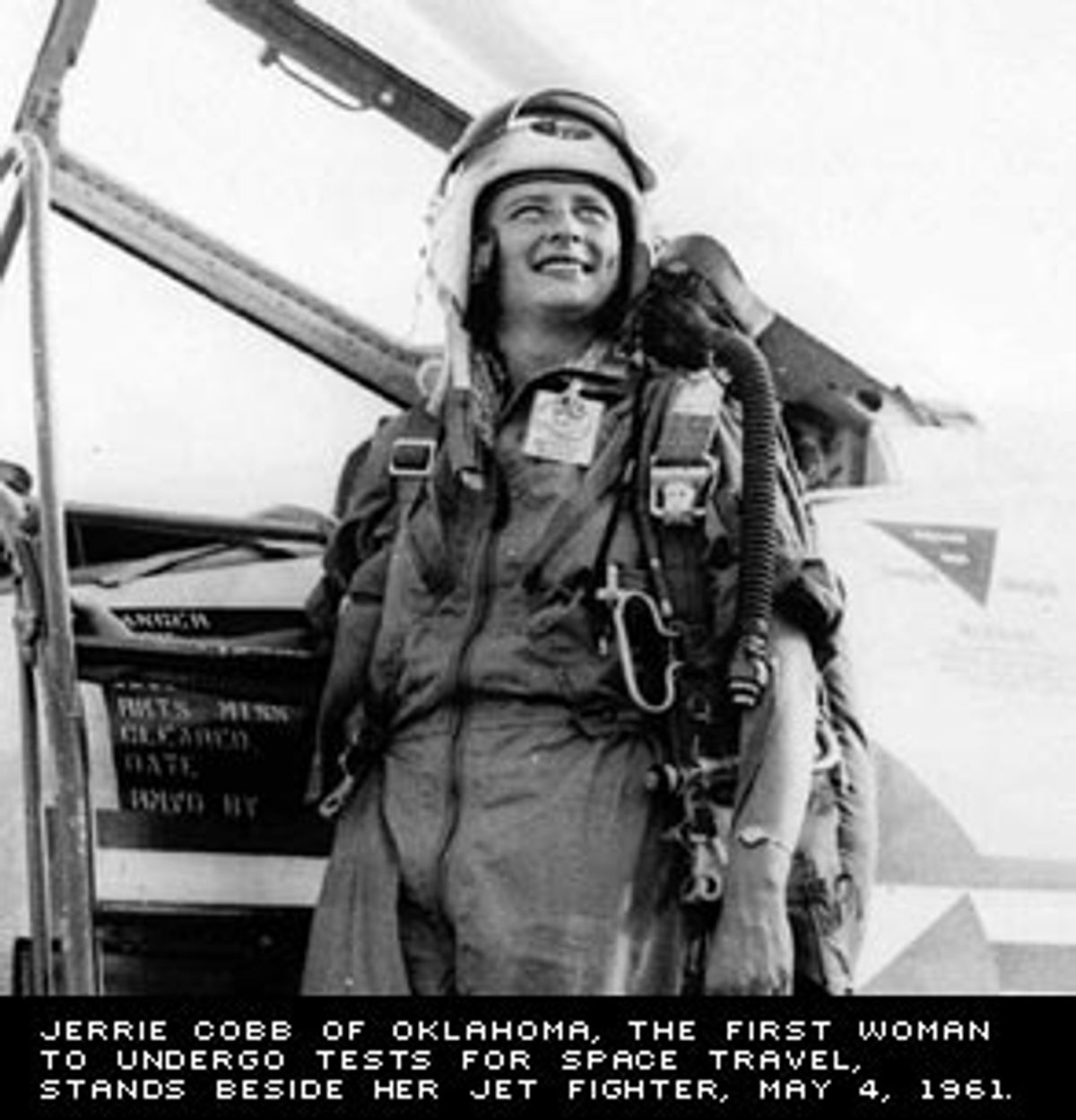Perhaps the initiative had several starts and stops, because it was still going during the 1962 hearings, when Cochran testified against it. According to Teitel's book, the program was stopped because the Navy refused access to testing facilities in Pensacola.
There was only one start and that was when Cochran got her husband to pay for starting it up. Cochran shut it down when it became clear women could not get close to the 16 G's that Project Mercury was demanding of the Mercury Seven. When Cochran pulled the plug, Jerrie Cobb tried to keep it going and spearheaded the effort to get Congress to pay for it but it wasn't "still going" after Cochran shut it down. As for the Navy refusing access to testing facilities in Pensacola, yes that was the end. The refusing of the access to the testing facilities took place after Jerrie Cobb failed in the centrifuge testing there at Pensacola. Her claims that she was at Pensacola in the centrifuge weren't untrue. Jerrie Cobb was there and documents survive from that time.
Cochran got the Navy to give them access to the Pensacola testing facilities. Then they sent Jerrie Cobb who was only able to get in the 5 to 6 G range before blacking out in the centrifuge. After Cobb's test results, Cochran informed the Navy they were stopping the program and the Navy revoked the access they had agreed to with Cochran which meant none of the other girls were allowed in. The statement "the program was stopped because the Navy refused access to testing facilities in Pensacola" can be seen as technically true but also not the whole story. It wasn't Congress, NASA, or the Navy that ended the program. It was Cochran who ended the program, and she did so for a good reason. Cochran was worried the centrifuge results, if they became public, would be used by those who wanted to set women back.
They took Alan Shepard on the first suborbital flight.
This is true. They also launched the first American satellite into orbit, and they served as the template for the Saturn I rocket. The problem for America was the Redstone were Nazi V2 rockets made by Nazis they acquired in Operation Paperclip, and America didn't really want those rockets leading the charge. America could have had the first satellite in orbit, beating Sputnik, but they instructed Wernher von Braun's group to not launch and instead gave the go-ahead to our domestically developed Vanguard rocket. It failed in a spectacular fireball with the Vanguard satellite that was supposed to be the first satellite ever. Then the Soviets got Sputnik in orbit, and then Americans gave von Braun the green light to use the Nazi rocket to get America's Explorer I satellite into orbit.
With that in mind, they didn't hold Wernher von Braun back for Project Mercury and his group was ready to go first as the Atlas was having some, um, explosion issues. There was even a scene in The Right Stuff that was a depiction of a real event where the astronauts were in attendance for an Atlas launch where the rocket exploded and Gus Grissom remarked "Are we really going to get on top of one of those things?"
The Redstone was ready first, and it was powerful enough to get a light satellite to orbit but it wasn't powerful enough to get the Mercury capsule to orbit and it wasn't powerful enough that NASA was worried about accelerating astronauts to death. With the Mercury capsule, the Redstone was a suborbital rocket, but that was what was needed for the early Mercury flights.
Much like there was no military jet training for women. There could have been, but no decision was made to include them.
This too is not untrue but the creation of the women-specific G-suits in the 1980's wasn't a trivial undertaking and even today with nearly half a century of advancement we still don't have G-suits for women that will get them to the 16 G's required of the Mercury Seven. The spacecraft we have now just aren't as nasty and our astronauts no longer need to endure what the Mercury Seven astronauts did.



